AUGUSTA (Day 2 - part 7)
We entered the blockhouse and watched a highly informative slideshow of the history of the area, including the native tribes and the fort.
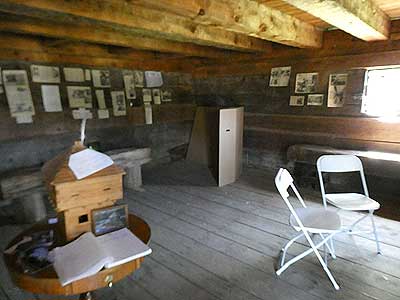
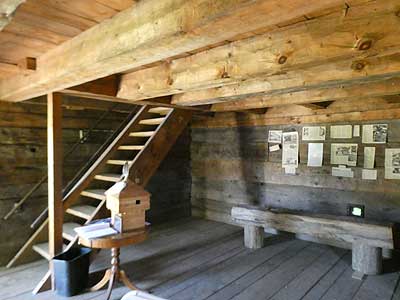

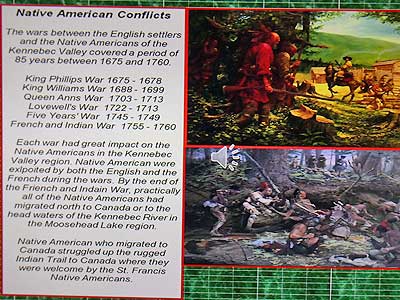

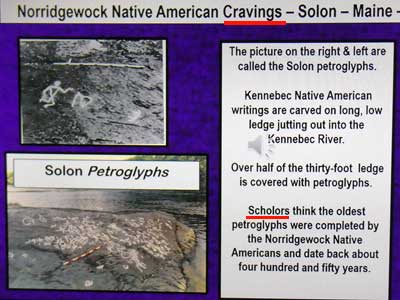
Unfortunately the entire thing was absolutely riddled with spelling and grammar errors.
We headed upstairs for more exhibits.
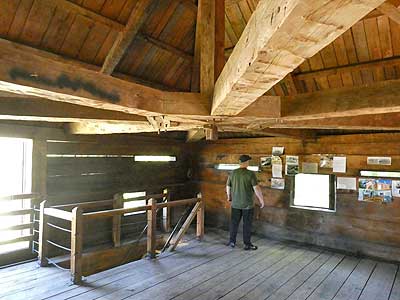
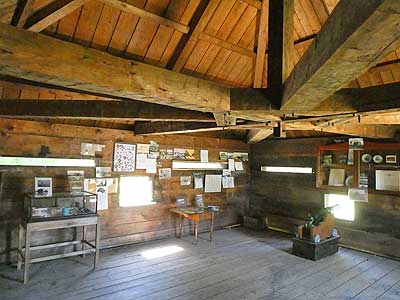
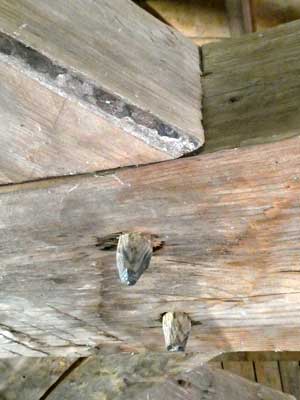
Ceiling beams
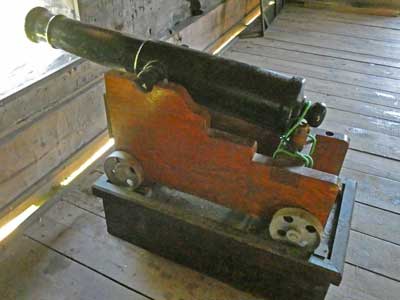
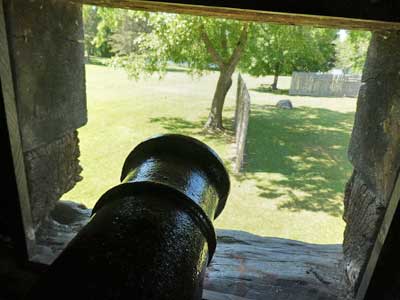
Cannons guarded in different directions.
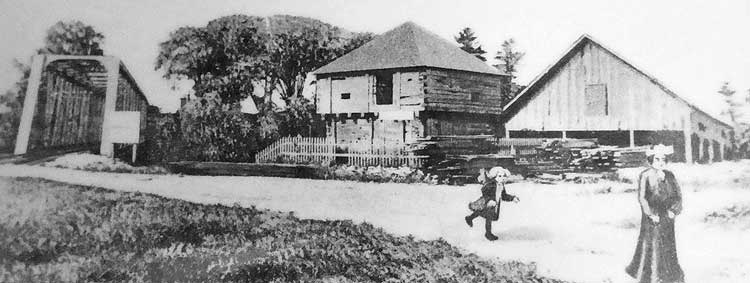
A postcard image from the late 1800s, with the blockhouse and a saw mill behind it.

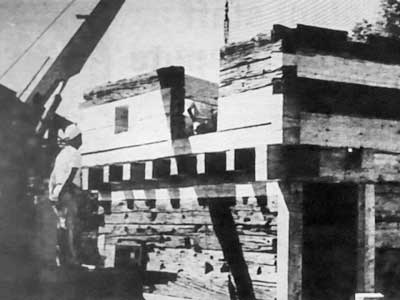
Rebuilding the blockhouse after the 1987. It was a mixture of original timbers and some new ones.
We then strolled down to the confluence of the two rivers.
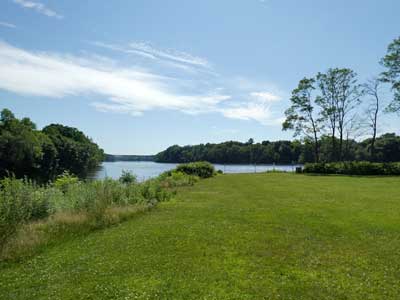
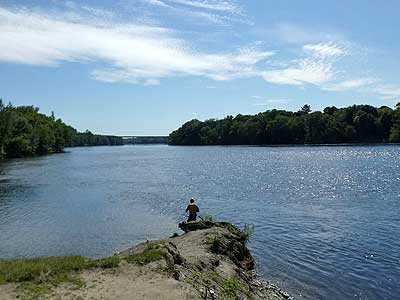
The Sebasticook on the left meets the Kennebec on the right.

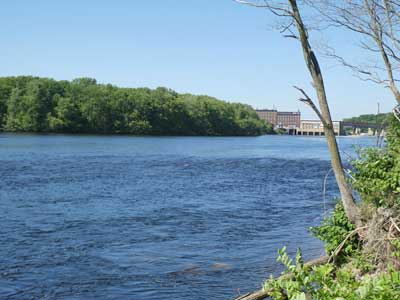
From there, we drove a short ways up to the Kennebec Riverwalk.
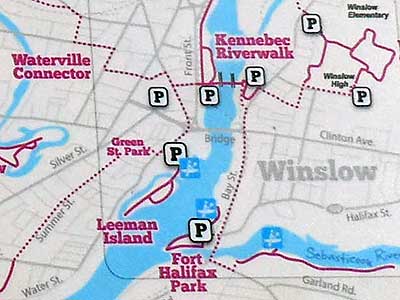
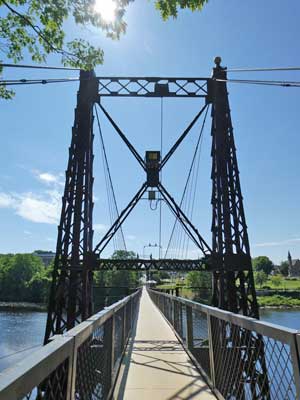
The Ticonic Footbridge, also known as the Two Cent Bridge
There have been toll bridges at this spot across the Kennebec River since the early 1820s. The bridge was damaged and rebuilt due to several floods in 1827, 1832 and 1855. In 1869, it was completely carried away.
This current bridge was constructed in 1901. It provided workers easy access to the large paper mill in Winslow as well as the new woolen mill (built in 1899) on the Waterville side. The toll was one penny. However, less than a year later, it too was washed away by high water. It was rebuilt in 1903, and to recover the cost, the toll rose to two cents, earning it the name Two Cent Bridge. It was hit was major floods in 1935 and 1987 but sustained only minimal damage.
The toll was abolished in the early 1960s when it was given to the city of Waterville as a gift. Unfortunately it was not kept up and fell into disrepair. By 1990, it had significant structural problems. In 2011, it was completely refurbished with help from the state.

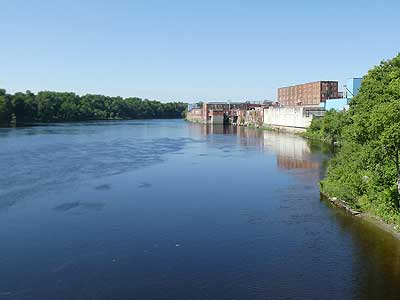
Spanning 576 feet, it is the longest and oldest wire suspension footbridge in the country. ... The river flows 170 miles, from Moosehead Lake to the Gulf of Maine.

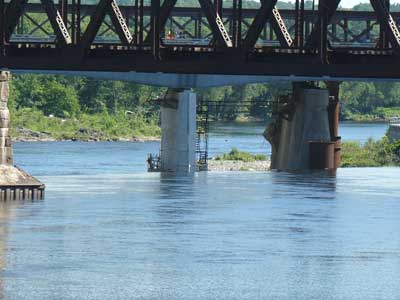
Ticonic Falls was originally Taconnet Falls, an Abenaki word meaning "a place to cross."
This area was named Head of Falls by French Canadian immigrants who came to work in the local mills in the late 1800s. Except for the bridge, the entire neighborhood was razed in 1976.
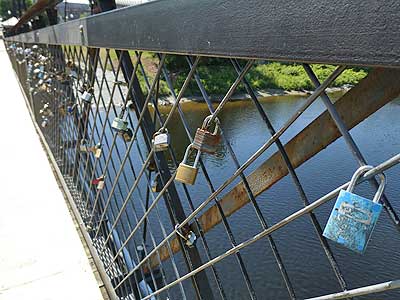
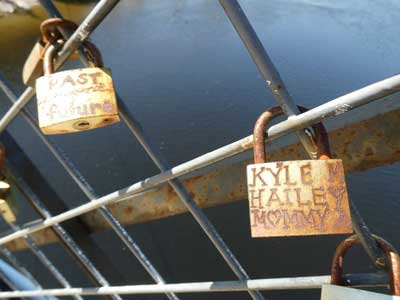
Known as "love locks," people use them to symbolize their love. After attaching the padlock, they throw the key into the river. The tradition originated in Serbia during World War I but it started becoming popular in 2006. Unfortunately the heavy weight of so many locks has been known to damage some bridges.
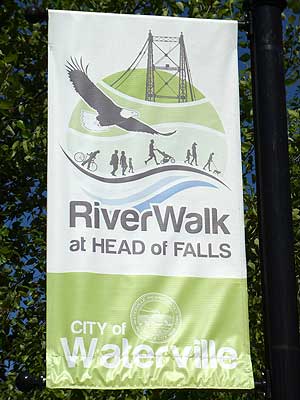
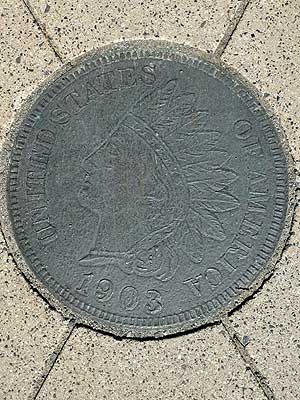
(right) The image of a 1903 penny (the year the toll rose to two cents)
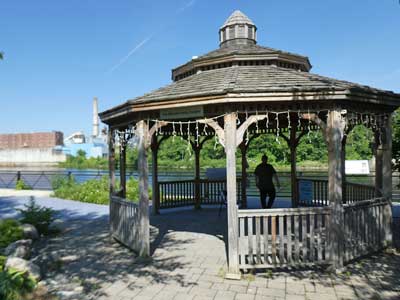
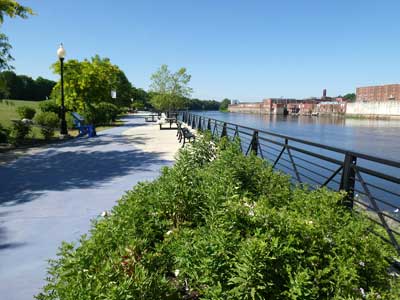


Some of these ducks were not very friendly to the others.

The Hollingsworth and Whitney Mill (which later became Scott Paper) opened in 1892 and was a pulp and paper mill which once employed hundreds of local residents. It produced over 235 tons of paper per day. It closed in 1997.
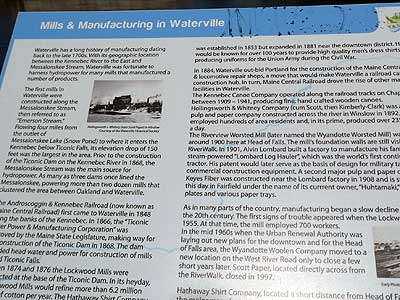

Informative signs about the area's and the river's history lined the path.
Transporting wood by water began in the 1600s. By the late 1800s, pulp and paper mills were big customers. The logs were cut into 4-foot-long pieces, which could completely clog the rivers. Log jams were common, and loggers used poles and even dynamite to break them up. In 1976, the state ended the log drives. By then, most paper companies had already started using trucking instead. The mill across the river was the last one in Maine to receive wood by water.
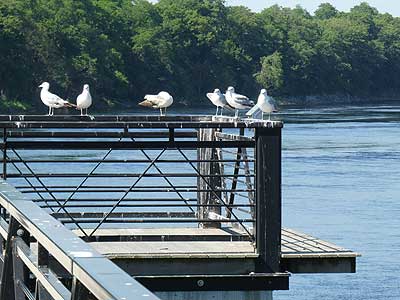

A collecction of gulls


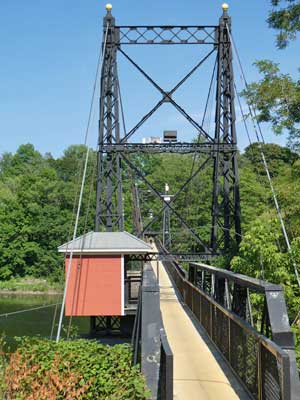
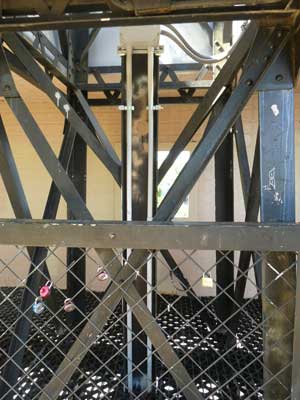
Walking back
return • continue

